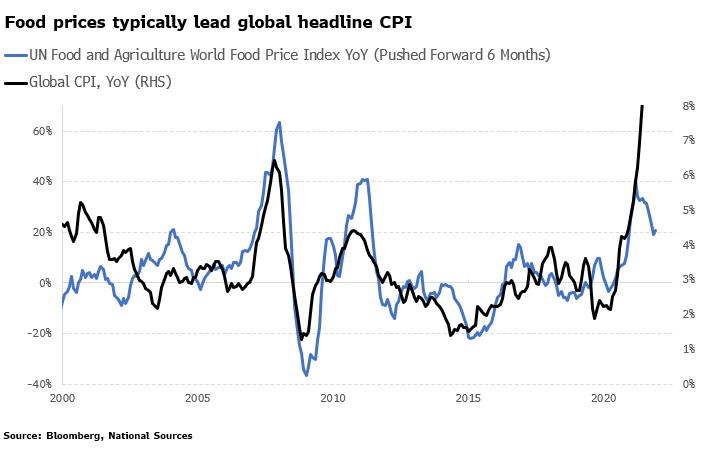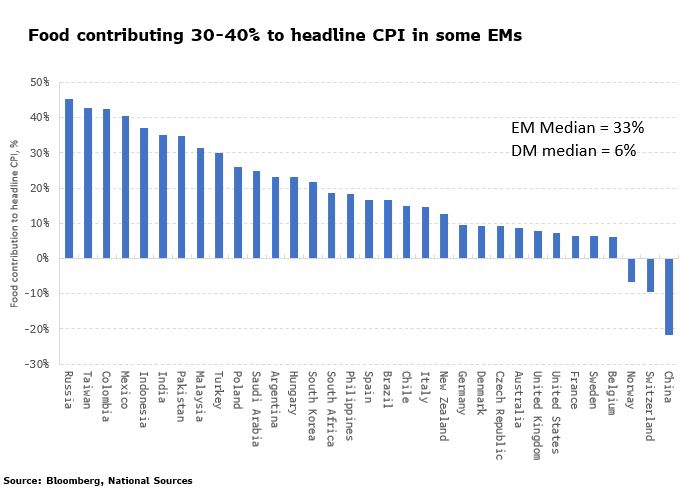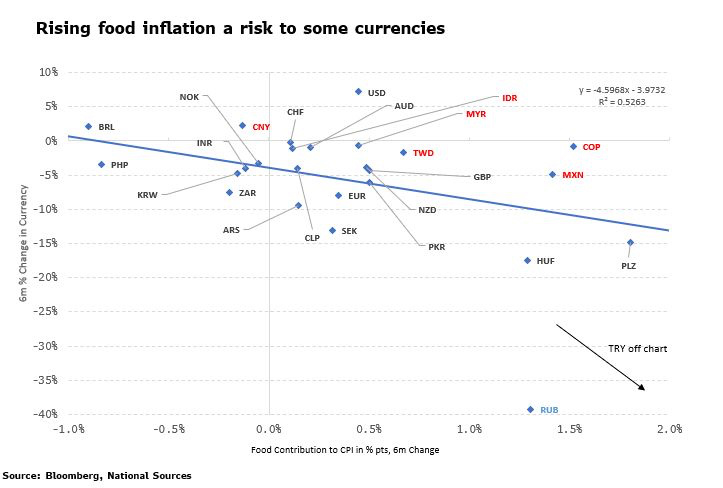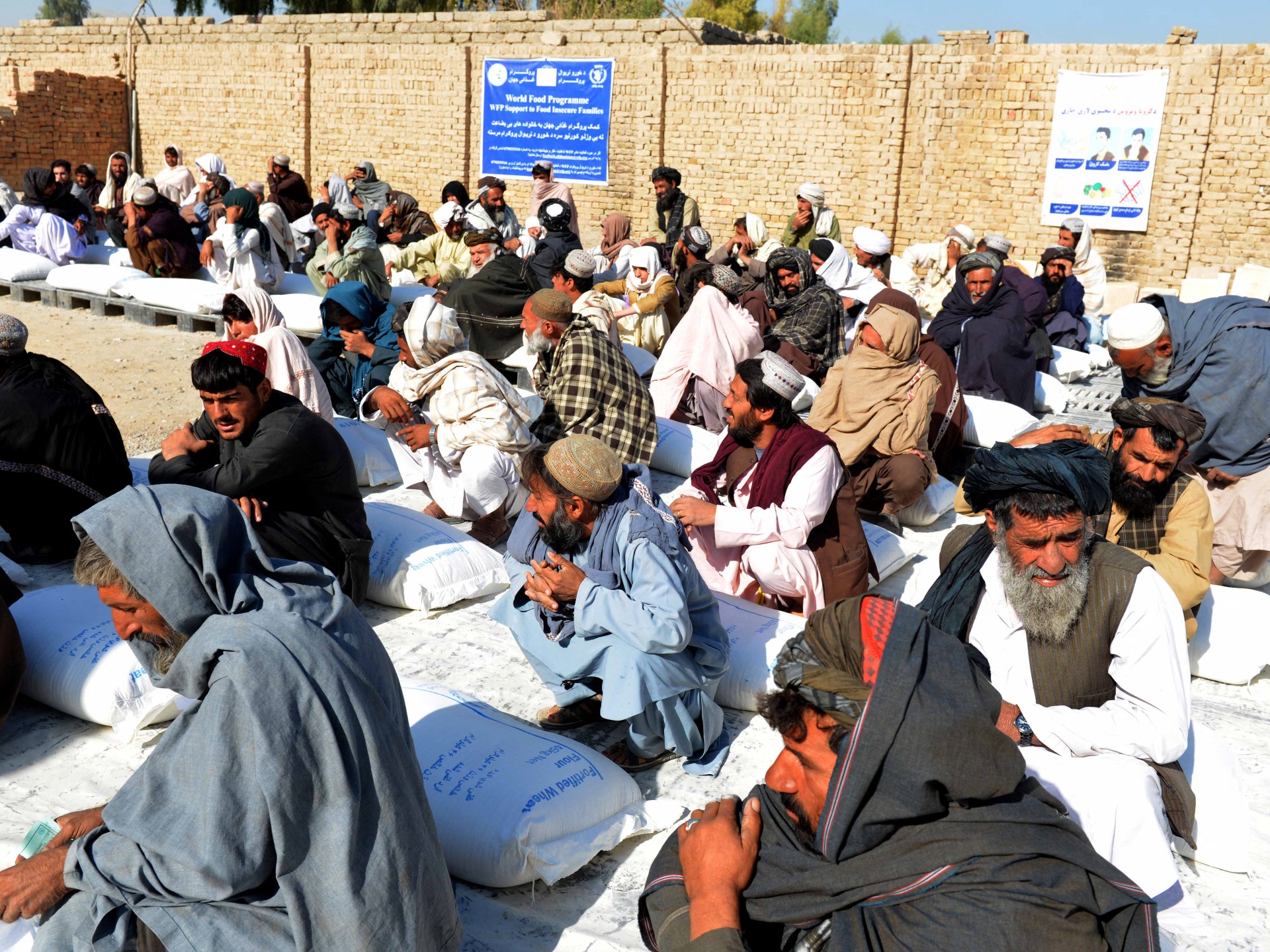Soaring food prices threaten emerging-market currencies | Food News
Rising food prices can be hugely destabilizing.
While energy prices are an ongoing risk to inflation in countries around the world, several emerging-market countries face a different problem: The pace of food price inflation is rendering their currencies vulnerable.
The UN’s February World Food Price Index, released on Friday, was essentially unchanged at 20.7% y/y vs 19.2% in January, perhaps surprisingly given the rampant rally in soft commodity prices such as corn and wheat. But inflation measures in general are severely lagging indicators, and the index should soon start to reflect recent rallies in soft commodity prices.
Monday’s acceleration in energy prices poses an additional risk to food prices, given oil is a key component in fertilizers. Furthermore, food prices typically lead global headline inflation. The chart below shows that as things stand, global CPI should ease over the next three to nine months, but there are upside risks to this if energy prices remain elevated.

However, global CPI masks some big underlying divergences, with emerging-market inflation – already rising much faster than developed-market inflation – acutely exposed to rising food prices.
This is because food represents a far larger percentage of headline CPI baskets in EM compared to DM countries. Food makes up almost half of India’s CPI basket, and over 30% of it in the Philippines, China and Russia, while in European countries it is around 10-15%, and in the U.S. it is only around 8%.
As was seen in the Arab Spring in the early 2010s, rising food prices can be hugely destabilizing. The impact they are having on broader inflation is growing and therefore the risk they pose to EM governments is mounting. For the median EM country, food is almost a third of current year-on-year headline CPI. In Russia, almost half of the current 8.7level of CPI is coming from food, whereas in the US, UK and much of Europe food is only 10% or less of headline CPI currently.

Food inflation presents a risk to currencies. We can plot the six-month change in food CPI’s contribution to the headline vs the six-month change in the currency for each country. We can see from the chart below the Taiwanese dollar, Mexican peso, the Colombian peso, the ringgit, the rupiah and the yuan all look vulnerable among EM currencies given the rise in food prices. Turkey is literally off the chart with food adding an extra 8.5% points to CPI over the last six months, while Russia’s currency has already collapsed due to sanctions.

And as currencies weaken, the risk of an inflation spiral in EMs rises as the cost of imported goods climbs even more.
NOTE: This was a post on Bloomberg’s Markets Live blog. The observations are those of the blogger and not intended as investment advice. For more markets analysis, go to MLIV.




